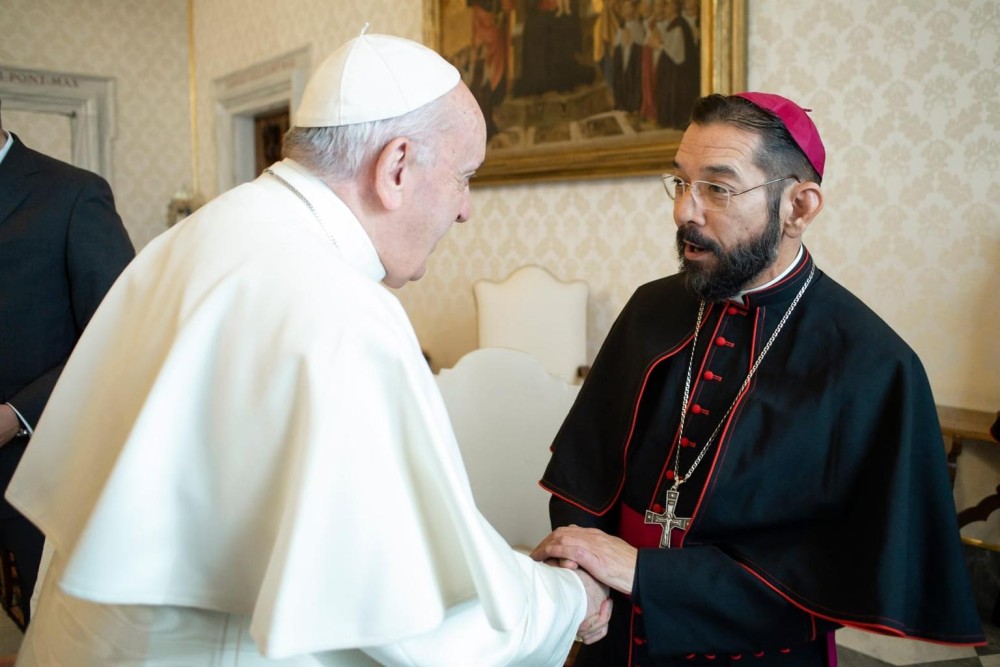
PROSPECT HEIGHTS — The recently published working document for the final gathering of the Synod of Bishops on Synodality focuses on the different relationships in the Church and presents the American faithful with an opportunity to reflect, says the U.S. Bishops’ Conference synod lead.
“The [document] presents the delegates and the People of God with the occasion to reflect deeply upon the grace of our relationship with God, the Most Holy Trinity, and to one another as incorporated into Trinitarian life in Christ by the spirit,” Bishop Daniel Flores of Brownsville, chair of the USCCB Committee on Doctrine, said in a July 9 statement.
“These relations are practically lived out in our local communities and in the Universal Church and are at the service of the mission,” Bishop Flores added. “The quality of our relations, rooted in charity, their theological and practical shape at all levels, are at the heart of synodal discernment and renewal in the Church.”
The official working document, known as Instrumentum Laboris, for the second and final Rome-based session of the synod, which will take place this October, was published on July 9. Its primary purpose is to inform the discernment that will take place at the synod gathering.
The 60-page document is titled “How to be a missionary synodal Church.” It begins with an introduction and then a section on the foundations of understanding synodality. From there, the document is divided into three sections on relationships, pathways, and places.
According to the document, the first section focuses on relationships with the Lord, between brothers and sisters, and between churches worldwide. The second section looks at the paths that support and nourish the dynamics of those relationships, touching on topics like the decision-making processes in the church and transparency and accountability.
The third section, meanwhile, focuses on the places in which these relationships are formed. It touches on different aspects of the local and global Church and highlights each’s uniqueness and interconnectedness.
The delegates of the second synod session will discern each of these sections when they arrive this October. The first session had 364 bishops, priests, religious, and lay delegates from around the world, including more than 20 from the United States.
While the document is specifically for the second synod session in Rome, Bishop Flores said Catholics and faith leaders in the states should also read it.
“I encourage everyone to read and discern this document within your community in conversation with the insights and fruits of earlier local, national, and continental Synod consultations,” Bishop Flores said.
